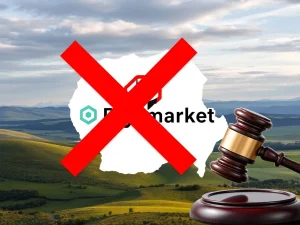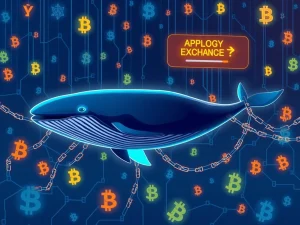MiCA Regulation: Tether CEO Warns EU Law is Dangerous for Stablecoins

The European Union’s new **MiCA Regulation** is stirring debate in the crypto world, especially concerning stablecoins. Recently, the CEO of Tether, Paolo Ardoino, spoke out strongly against the framework, explaining why the company chose not to register its flagship **USDT** stablecoin under the new rules.
Tether CEO Paolo Ardoino Explains Stance on MiCA Regulation
Speaking at the Token2049 conference in Dubai, Tether CEO **Paolo Ardoino** addressed the criticism surrounding Tether’s decision to bypass registration under the EU’s Markets in Crypto-Assets (MiCA) framework. Despite MiCA requirements being implemented since December 2024, Ardoino stated clearly that Tether has no intention of applying for its **USDT** stablecoin to be compliant in European countries.
This decision could potentially lead to exchanges delisting **USDT** for EU users, a move already seen by some platforms. Ardoino acknowledged the need for crypto firms to follow regulations but suggested there’s a “fear of compliance” among some EU companies, while also expressing significant concerns about the MiCA framework itself.
Why is the EU’s MiCA Regulation Dangerous?
According to Ardoino, the **MiCA Regulation** poses significant risks, particularly for stablecoins and even for the traditional banking system in Europe. He described the framework as “very dangerous when it comes to stablecoins.”
His primary concerns include specific requirements within MiCA, such as mandates for stablecoin issuers to hold a substantial portion (like 60%) of their reserves in insured cash deposits within European banks. Ardoino suggested this requirement could put stress on small to medium-sized European banks, potentially causing them to “go belly up” in the coming years.
Protecting Global Users: Tether’s Priority for USDT
Ardoino emphasized that his decision not to pursue the **MiCA Regulation** license was primarily aimed at protecting Tether’s vast global user base, estimated at over 400 million people worldwide. He argued that these users, many outside of Europe, might not have the same financial advantages or access as European citizens.
He also voiced a controversial opinion regarding the European Central Bank’s potential motives, suggesting they might be more interested in promoting the digital euro as a tool for control over how people spend money, rather than fostering a healthy stablecoin ecosystem.
The Impact of MiCA on Stablecoins in Europe
Since the implementation of **MiCA**, crypto exchanges operating in the EU have begun adapting to the new regulatory landscape. This has led to some platforms reviewing and, in certain cases, delisting stablecoins that do not plan to seek MiCA compliance.
Examples include Kraken, which delisted five stablecoins including **USDT**, and Crypto.com, which announced plans to delist ten stablecoins. This illustrates the direct impact of the **MiCA Regulation** on the availability and use of certain stablecoins within the European market.
Tether’s Strategy Beyond EU Crypto Law
While navigating the challenges presented by **EU Crypto Law**, Tether is also considering its approach in other major markets like the United States. Ardoino noted that operating in the US would likely require a different type of product due to the competitive landscape with local stablecoin issuers.
He also commented on the broader trend of nations and companies accumulating Bitcoin reserves, calling it “just inevitable” as education and adoption grow. This indicates Tether’s view on the evolving global financial landscape beyond specific regional regulations like MiCA.
In summary, Tether CEO Paolo Ardoino is taking a firm stance against the EU’s **MiCA Regulation**, particularly its provisions for stablecoins. He views the framework as potentially harmful to both stablecoin issuers and European banks, prioritizing the protection of Tether’s global user base over seeking MiCA compliance for **USDT**. This decision highlights the ongoing tension between global crypto projects and regional regulatory frameworks, with clear implications for the availability of stablecoins in Europe.









